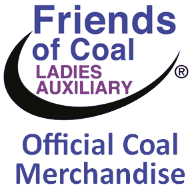
 











|
Signature Sponsor


October 16, 2025 - Fastmarkets’ Coaltrans Asia 2025 conference brought together miners, steelmakers, traders and policymakers. It took place in Bali, Indonesia on September 20-23. The event aimed to assess supply constraints, investment trends, and shifting demand dynamics in the coking coal and steel markets. Here are three key takeaways from the discussions. The focus was on crude steel growth in Southeast Asia, India’s long-term capacity expansion, and the evolving royalty regime in Queensland, northeastern Australia. Geopolitical tensions, US import tariffs, economic slowdown, and declining steel production weigh on coking coal trade flows & demand In the first seven months of 2025, global crude steel production reached 1.09 billion tonnes. This represents a 1.9% year-on-year (YoY) decline, resulting in reduced demand for coking coal. From January to July this year, crude steel production notably declined across most major producing countries. However, India and the United States recorded growth. All other main producers saw a drop in output compared with the same period last year. Crude steel production (Jan-Jul 2025) – Top 10 producers: • China: 594.5 million tonnes, down by 3.1% YoY Meanwhile, tariffs on Northeast Asian automakers – particularly continuing US tariffs – have depressed steel demand and, consequently, coking coal imports. In Europe, weaker steel production and aggressive energy transition policies have further reduced demand for coking coal. Continued strong demand with constrained supply may lead to a significant shortage of steelmaking coal The global steelmaking coal market is tightening. This is because strong demand continues to outpace the growth of new supply, according to an Australian mining source. India and Southeast Asia are moving ahead with significant investments in blast furnace technology. This ensures their dependence on coking coal for decades. For example, India’s per capita finished steel consumption and crude steel production are each around 104 kg. This figure is less than half the global average. The country’s crude steel production capacity is projected to grow. It is expected to increase from 190 million tonnes today to 300 million tonnes by 2031, and to 500 million tonnes by 2050. In Southeast Asia, current crude steel production stands at 71.9 million tonnes. Expectations are that it will grow by 40-50 million tonnes over the next five years. At the same time, low-carbon steelmaking technologies remain years – if not decades – away from commercial viability. In Europe, the transition to green steel is progressing more slowly than anticipated. This suggests that European demand for coking coal will likely remain stable in the near term. It further reinforces the global demand base. On the supply side, new steelmaking coal projects face increasing challenges. Rising costs, stricter regulations and long approval timelines – averaging nearly four years in Australia – are limiting the pace of development. According to the Minerals Council of Australia and the Environment Protection and Biodiversity Conservation Act Portal, timelines for mine approval in Australia have increased. They have grown by 60% since 2019, reaching 1,371 days in 2024. The royalty fee for mines has, meanwhile, increased notably since July 2022, reflecting changes to Queensland’s progressive coal royalty regime. At a coking coal price of $200 per tonne, the royalty payable is approximately $34 per tonne. This is about $10 more than under the previous structure. When prices rise to $250 per tonne, the royalty increases further to around $54 per tonne. This represents a $20 jump. According to forecasts from an industry analyst, global seaborne supply is unlikely to keep pace with demand beyond 2026. This is true even when accounting for advanced projects currently in the pipeline. China’s coking coal export volume remains limited compared with overseas demand. It is significantly influenced by factors such as government policies, transportation costs, domestic supply and demand, and pricing, sources said. In 2024, China’s coking coal exports totaled 730,000 tonnes. In 2025, Shanxi Coking Coal Group and Pingmei Group resumed coking coal exports. From January to July this year, China exported 810,000 tonnes of coking coal. This marks an increase of 320,000 tonnes or 65% year-on-year. This growth was mainly due to sufficient domestic supply in the first half of the year. However, China’s major coal production areas are in the country’s central and western regions, resulting in high overland transportation costs. Compared with international seaborne coal, Chinese coal is less competitive. Additionally, foreign buyers tend to prefer high-quality coal, further limiting the potential for significant growth in China’s coal exports. The Chinese government has little incentive to reverse its coal export policy. Coal exports contribute negligibly to the national economy. In the first seven months of 2025, coal exports accounted for just 0.03% of China’s total export value. |
 








|